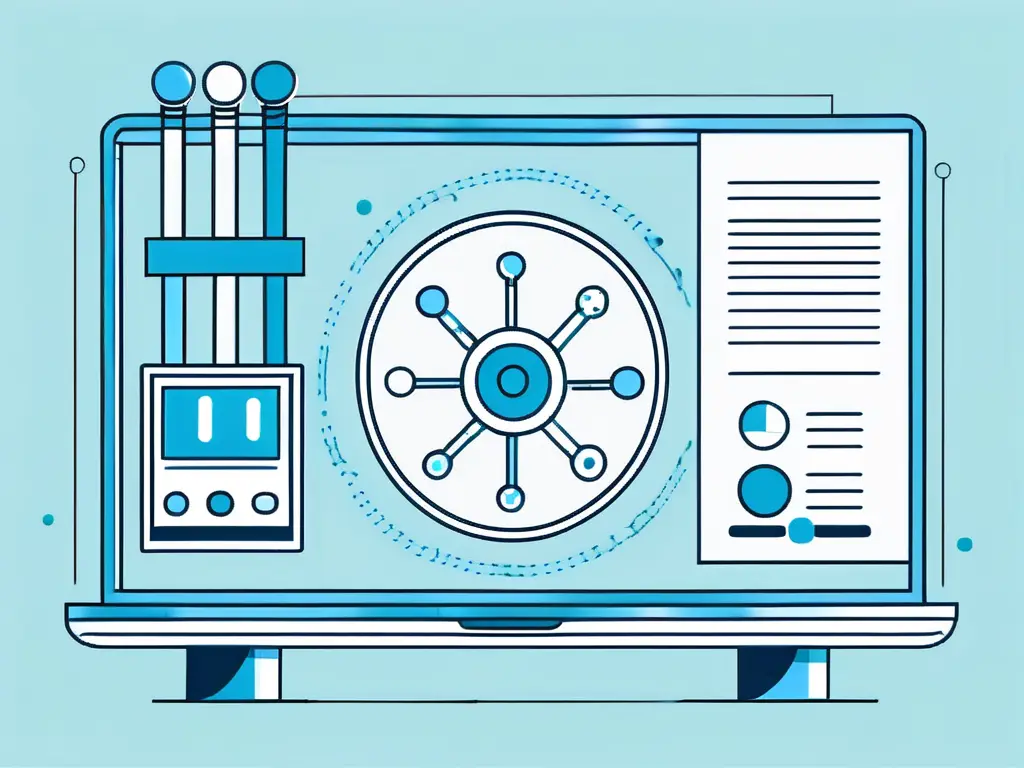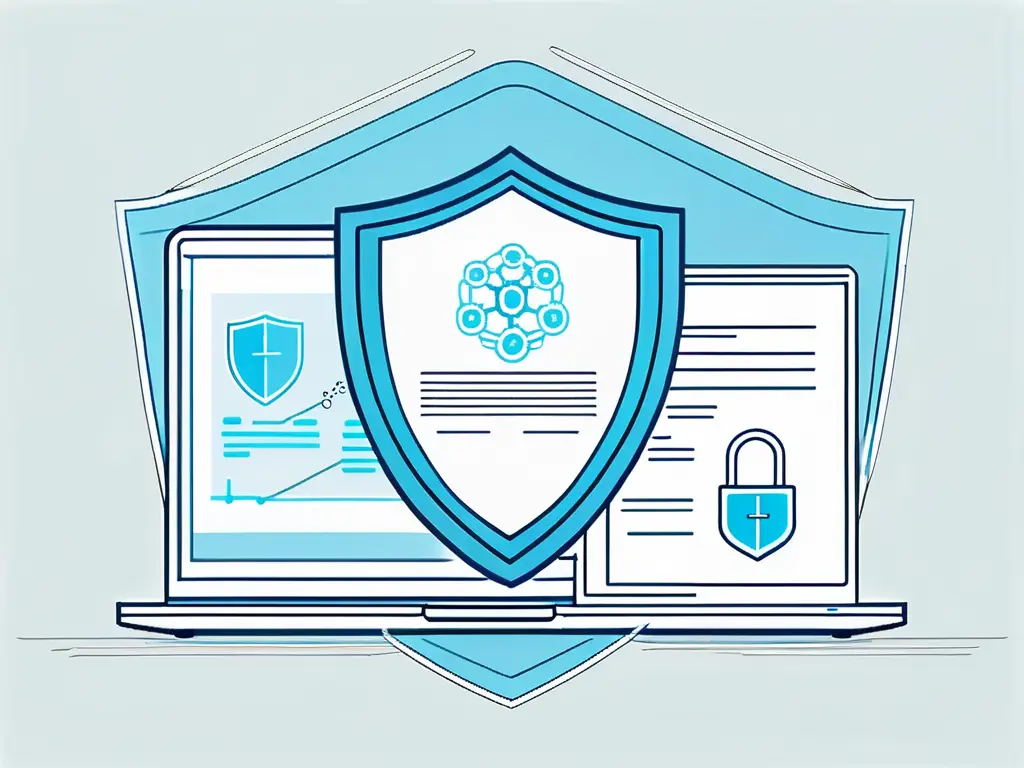In our increasingly digital world, cybersecurity is a paramount concern. This is especially true in the healthcare industry, where we rely on medical devices to save lives and improve patient outcomes. To ensure the safety and security of these devices, the European Union (EU) has implemented the In Vitro Diagnostic (IVD) Regulation.
Understanding the IVD Regulation
Before we delve into the specifics of the IVD Regulation, let’s first understand what it is and why it is necessary. The IVD Regulation is a framework put in place by the EU to regulate the cybersecurity of in vitro diagnostic devices. These devices analyze samples from the human body to provide information for diagnostic, monitoring, and treatment decisions.

Definition and Purpose of IVD Regulation
At its core, the IVD Regulation aims to ensure that medical devices in the EU are safe, effective, and reliable in their cybersecurity measures. It sets out requirements for manufacturers regarding the design, production, and post-market surveillance of these devices. Doing so helps protect patient privacy and safeguards against potential cyber threats.
But what does it mean for a medical device to be safe, effective, and reliable regarding cybersecurity? These devices should have robust security features to prevent unauthorized access, data breaches, and other cyber attacks. This includes encryption of patient data, secure communication protocols, and regular software updates to patch potential vulnerabilities.
The IVD Regulation also emphasizes the importance of post-market surveillance. This means that manufacturers are required to monitor the performance of their devices even after they have been placed on the market. By doing so, they can identify and address any potential cybersecurity issues that may arise over time, ensuring the devices’ ongoing safety and security.
The Role of IVD in Medical Device Cybersecurity
You may be wondering why the IVD Regulation specifically focused on medical device cybersecurity. The answer is that in vitro diagnostic devices often connect to other devices, networks, and systems within and outside healthcare facilities. This connectivity opens up possibilities for cyber attacks, which can compromise patient data and pose severe risks to patient safety.
Imagine a hacker gaining unauthorized access to a hospital’s network through a vulnerable in vitro diagnostic device. They could potentially manipulate test results, leading to misdiagnoses and improper treatment. This highlights the critical importance of ensuring the cybersecurity of these devices.
By regulating the cybersecurity of these devices, the IVD Regulation aims to mitigate these risks and ensure that healthcare professionals and patients can trust in the security of their medical devices. It provides a clear framework for manufacturers to follow, ensuring they implement the necessary security measures to protect patient data and maintain the integrity of diagnostic results.
Key Components of the IVD Regulation
The IVD Regulation is a comprehensive framework that aims to ensure the safety and effectiveness of in vitro diagnostic devices. It covers a wide range of aspects, including pre-market scrutiny, post-market surveillance, risk management, and quality assurance, to safeguard public health and promote innovation in the healthcare industry.
Pre-market Scrutiny
One important aspect of the IVD Regulation is the pre-market scrutiny process. This involves a comprehensive assessment of the device’s cybersecurity measures before it can be placed on the market. Manufacturers must demonstrate that their devices meet security requirements and are adequately protected against cyber threats.
The pre-market scrutiny process also evaluates the device’s analytical and clinical performance to ensure its accuracy and reliability. This rigorous assessment helps prevent the introduction of substandard or unsafe devices into the market, ultimately enhancing patient safety and confidence in diagnostic results.
Post-market Surveillance
Once a device is on the market, the IVD Regulation also requires ongoing post-market surveillance. This entails monitoring the device’s performance and cybersecurity over its lifecycle, including identifying and addressing potential vulnerabilities or incidents. By doing so, the regulatory authorities can take prompt action to mitigate risks and ensure the continued safety and security of the devices.
Continuous post-market surveillance is essential for detecting emerging issues or trends related to the device’s cybersecurity and performance. It enables regulatory authorities to respond swiftly to any concerns, such as cybersecurity breaches or adverse events, and take appropriate measures to protect public health and maintain the integrity of diagnostic testing.
Risk Management and Quality Assurance
Risk management and quality assurance are integral parts of the IVD Regulation. Manufacturers must implement a systematic approach to identifying, assessing, and managing the cybersecurity risks associated with their devices. This includes developing robust quality management systems and processes to ensure devices meet the highest cybersecurity standards.
Effective risk management practices enhance the cybersecurity of IVD devices and contribute to overall product quality and reliability. By proactively addressing potential risks and implementing quality assurance measures, manufacturers can improve their devices’ performance, safety, and cybersecurity, ultimately benefiting patients, healthcare providers, and regulatory authorities alike.
The Impact of IVD Regulation on Medical Device Manufacturers

The In Vitro Diagnostic (IVD) Regulation not only sets out compliance requirements but also significantly influences the landscape for medical device manufacturers. It necessitates a paradigm shift in how manufacturers approach cybersecurity and security measures for their devices, emphasizing the critical need for robust protection against cyber threats.
Compliance Requirements
The IVD Regulation imposes strict compliance requirements on manufacturers. They must adhere to the established cybersecurity standards and ensure their devices meet security measures. This may involve investing in cybersecurity expertise, conducting thorough risk assessments, and implementing appropriate security controls throughout the device’s lifecycle.
Manufacturers are required to maintain comprehensive documentation demonstrating their compliance with the regulation. This includes detailed records of cybersecurity measures implemented, risk assessment reports, and evidence of ongoing monitoring and updates to ensure the device’s security remains effective.
Potential Challenges and Solutions
While complying with the IVD Regulation may pose challenges for manufacturers, it also presents opportunities for innovation and collaboration. Manufacturers can leverage cybersecurity best practices and technologies to enhance the security of their devices. Collaborating with cybersecurity experts and regulatory authorities can also help address challenges and ensure compliance with the regulations while continuing to deliver safe and effective devices.
The emphasis on cybersecurity and data protection under the IVD Regulation encourages manufacturers to adopt a proactive approach to security. This includes integrating security features into the device’s design phase, conducting regular security assessments, and staying abreast of emerging cyber threats to mitigate risks proactively.
Future of IVD Regulation in Cybersecurity
As technology continues to evolve, so too will IVD Regulation in cybersecurity. Let’s take a glimpse into the future and explore emerging trends and predicted changes in the regulation.
The landscape of medical device cybersecurity is constantly shifting, driven by rapid technological advancements and the increasing interconnectedness of devices. As the healthcare industry embraces digital transformation, the security of medical devices becomes paramount. The future of IVD Regulation will likely focus on addressing the complex challenges posed by the Internet of Things (IoT) and the potential vulnerabilities they introduce. Stakeholders will need to collaborate closely to develop robust cybersecurity measures that safeguard patient data and ensure the integrity of medical devices.
Emerging Trends in Medical Device Cybersecurity
Advancements in technology bring both opportunities and challenges in medical device cybersecurity. With the rise of interconnected devices and the Internet of Things (IoT), ensuring the security and privacy of patient data becomes even more crucial. As such, future iterations of the IVD Regulation may need to address these emerging trends and provide guidance on securing connected medical devices.
The emergence of artificial intelligence and machine learning in healthcare introduces new considerations for cybersecurity. These technologies can revolutionize patient care and raise concerns about data privacy and security. The future of IVD Regulation may involve incorporating guidelines for the safe and ethical use of AI in medical devices, ensuring that patient information is protected while harnessing the benefits of these innovative technologies.
Predicted Changes in IVD Regulation
With the growing awareness of cybersecurity risks and the need to protect patient safety, the IVD Regulation is likely to continue evolving. This may include updates to the pre-market scrutiny process, enhanced post-market surveillance requirements, and enforcement of stricter compliance measures. Manufacturers should stay informed about these predicted changes to ensure they remain compliant and prioritize their devices’ cybersecurity.
As global cybersecurity threats evolve, international collaboration and harmonization of regulations will be crucial. The future of IVD Regulation may involve closer alignment with international standards and frameworks to create a unified approach to cybersecurity in the healthcare sector. By fostering cooperation among regulatory bodies worldwide, stakeholders can work together to establish robust cybersecurity practices that protect patients and uphold the integrity of medical devices on a global scale.
Conclusion: The Importance of IVD Regulation in Ensuring Cybersecurity
The IVD Regulation is critical in ensuring the cybersecurity of in vitro diagnostic devices. By setting out clear requirements and guidelines, it helps protect patient data, maintain the integrity of medical devices, and safeguard against potential cyber threats. In an increasingly digital healthcare landscape, the IVD Regulation ensures patient safety and maintains trust in medical devices.

As the IVD Regulation underscores the critical importance of cybersecurity in the medical device sector, it’s clear that compliance is not just a regulatory requirement but a strategic imperative. Blue Goat Cyber stands ready to assist you in navigating the complexities of medical device cybersecurity. Our veteran-owned business specializes in providing comprehensive B2B cybersecurity services, including adherence to stringent HIPAA and FDA regulations. With our team’s high-level certifications and proactive approach, we ensure that your medical devices are compliant and secured against the evolving landscape of cyber threats. Contact us today for cybersecurity help, and let us be your partner in protecting patient data and maintaining trust in your medical devices. Embrace security and embrace success with Blue Goat Cyber.


